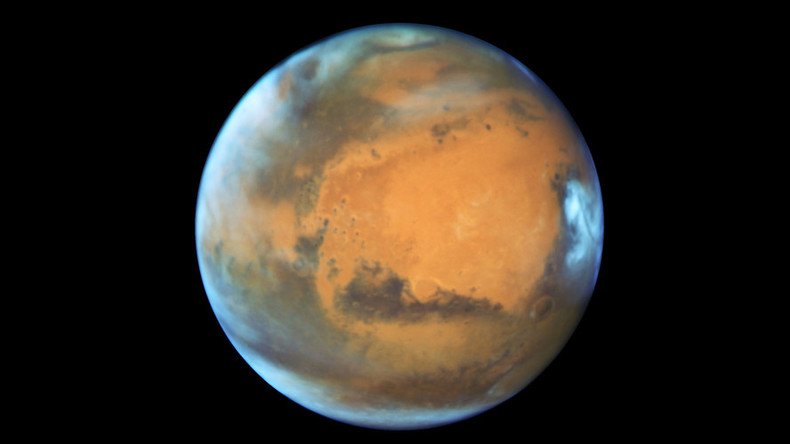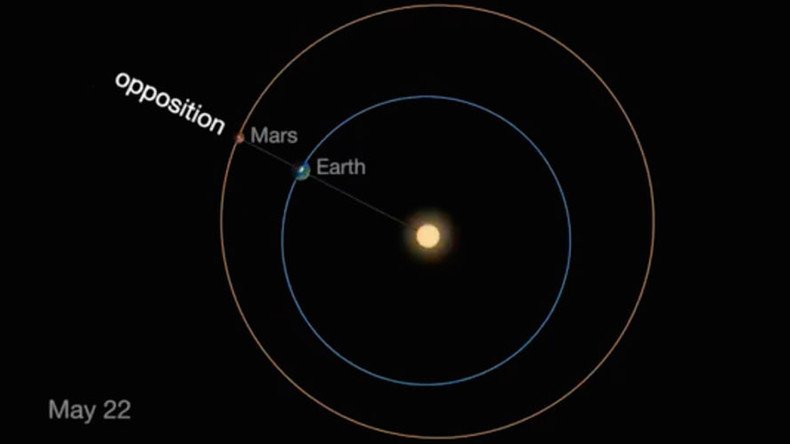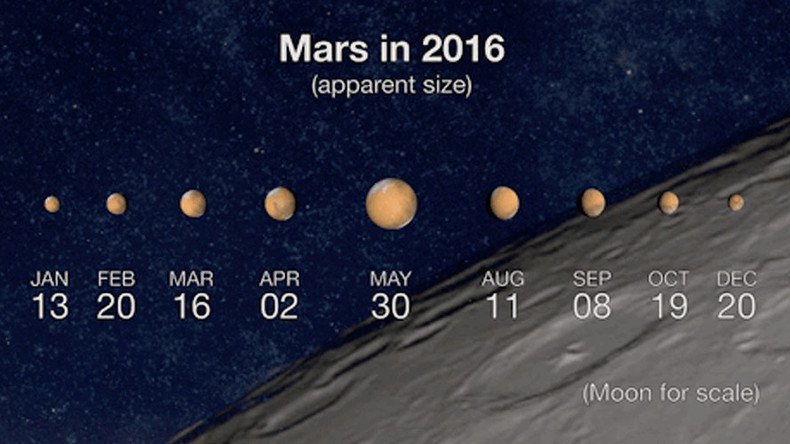Look to the sky: Red Planet at its brightest & largest in years

Stargazers are up for a treat this weekend, with Mars appearing much brighter and larger than usual, due to the Red Planet making its closest approach to Earth in a decade.
On Sunday, the fourth planet will come into alignment with the Sun and Earth in an event called “the opposition of Mars,” so called because Mars will be situated directly to the opposite of the Sun from the Earth.
Such alignments generally cause celestial objects to appear brighter, and Mars will shine with a fiery yellow luminosity. Sky-watchers will be able to see it rising in the east when the sun sets in the west, and following the path of the sun in the sky.

This opposition happens every two years and 50 days, but the actual distance between Mars and Earth varies because of the complicated interaction of celestial bodies.
“Gravitational tugging by the other planets constantly changes the shape of our orbits a little bit. Giant Jupiter especially influences the orbit of Mars,” NASA said. “Also, the orbits of Earth and Mars don't lie in quite the same plane. The paths the planets take around the sun are slightly tilted with respect to each other.”
While May 22 will be the best time to view Mars, it will be brighter and larger than usual for the next few weeks because of its proximity. That’s because on May 30, the Red Planet will come to the closest point to Earth in over a decade, at a distance of just 46.8 million miles (75.3 million km), according to NASA.

If skies are clear, Mars will be glowing and visible to the naked eye for much of the night on the 30th, but using a simple home telescope will reveal some of its finer details.
As glorious as Mars will be to behold in a few days, the planet’s opposition in 2003 was the closest it approached to Earth since prehistoric times. Those who witnessed it had a once-in-a-lifetime experience, since the Red Planet won’t be that close for another 300 years.












